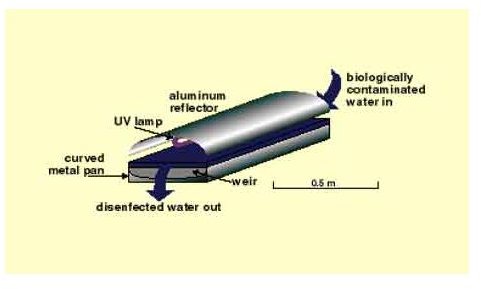1990s Technology Timeline: Massive Growth During the Decade of the 90s
Today, when we have advanced computers, highly efficient machines, mobile phones, and satellite mapping, the scope of technological advancement has only increased. Every day a new mobile device, a better and faster computer, or a smarter car engine is developed by engineers (and announced by marketing). The scope of improvement and growth remains exponential.
What were the major technology developments of the 1990s? Let’s browse through the timeline.
Achievements in 1990
The “World Wide Web” (originally all one word) was first proposed by Sir Tim Berners Lee of CERN (the European Organization for Nuclear Research) in 1989. By 1990, the proposal had grown to include a read-only system of distributed document linking called hypertext, which was based on a markup language called HTML.
Originally “markup” referred to conventions in the printing world in which manuscripts to be published were “marked up” to show formatting directions for the typesetting process, but invisible for the end user, the reader. In computerized typesetting and desktop publishing, systems like “LaTex” were already based on markup, but were more complicated than “what you see is what get” (WYSIGYG). Similarly, HTML was part of the invisible underpinning of web pages. The “Web,” as it became known, also brought the first host systems, the web servers, and the first client applications, the web browser.1
Revival of Electric Cars
In 1990, the American government passed the Clean Air Act, which among other things asked automobile companies to develop cleaner and more fuel-efficient cars. The energy crisis of 1970s was the basis for the fuel mileage requirement and environmental concerns about pollution (such as Los Angeles “smog”) forced the government to enforce clean energy rules. This resulted in the mass revival of public interest in electric cars. Although electric cars came into existence in the mid 1900s, they gained immense popularity in the last decade of the century. This was largely due to the energy act and regulations issued by the California Air Resources Board (CARB). Nissan, Toyota, and General Motors started rolling out modern electric vehicles. The 1990 Los Angeles Auto Show became the turning point of the electric car industry.
Human Genome Project
The project was focused on identifying the sequence of chemical base pairs making up DNA. The project was completed in 2003, thirteen years after it was started, and its findings have helped scientists unfold many mysteries of genetic sciences and understand the DNA makeup of human beings.
Hubble Space Telescope (HST)
The HST was launched in April 1990 and it was a major step toward the study of extraterrestrial elements. It celebrated its 10th anniversary on April 24, 2010. As of now, the HST has undergone five service upgrades, which have enabled it to send better images that have helped scientists and astronauts to study our universe and its characteristics. 2
1991
- The world’s first “webcam” comes into existence at Cambridge University. The actual camera remained in use for ten years (until 2001). It was invented by James Quentin and Paul Jardetzky.
- In 1991, Japan Electronic Industries Development Association produces the world’s first memory card.
- Fujitsu Corporation displays the world’s first plasma display screen in 1992.

The Ultraviolet Water Purifier - 1993
Ashok Gadgil, a Civil and Environment Engineering Professor, invented the method of using ultraviolet rays to disinfect drinking water. The project started at the Lawrence Berkeley National Laboratory in Berkeley, California. It worked on a 60-watt solar cell battery and weighed only 15 pounds. The whole purification system works fast and costs as little as five cents for every thousand gallons. This invention helped a great deal in controlling water-borne diseases in developing nations. The UN and WHO sponsored this project and helped in distributing UV filter units in developing and poor nations. 3
The Pentium Processor - 1993
The world was already head over heels in love with the World Wide Web and its magical abilities, but computers were not smart enough and fast enough to reciprocate the same feeling. Intel, which is now well-known as a technology giant of the world, entered the fray on March 22, 1993 when it launched its exclusive Pentium brand of microprocessors. The journey started with Pentium Classic and today it has landed into a completely new era, where Pentium is replaced by Intel Core Processors. However, the Pentium’s contribution to technological development enabled the types of computer applications that we take for granted these days. The Intel Museum in Santa Clara, California proudly showcases the Pentium as one of its greatest achievements. 4
The Glenn Anderson Transitway, part of Interstate highway 105, opened in Los Angeles, featuring a light rail train that runs in the median. Sensors buried in the pavement monitor traffic flow, and closed-circuit cameras were used to alert officials to accidents so that immediate rescue operations could be initiated.
The IBM Simon, the first smartphone, was released as a concept phone in 1993.
From 1995 to 1997
Java Programming Language - 1995
Prior to the invention of Java programming language, C and C++ were the only popular languages used by coders and software developers. Java made it easy for programmers to code because it was class-based, concurrent and an object-oriented language that had very few implementation dependencies compared to existing languages. For client-server web applications, Java was a tailor-made fit. The major features of Java were its portability, dynamic scope, and secure design.
VOIP - 1995
Vocaltec, Inc., a telecommunication company based in Israel, was the first company to start VOIP services in 1995. Within three years, the VOIP market became very popular and PC-to-phone solutions flooded the markets. 5
In 1995, the Boeing 777, a twin-engine airplane, became the first ever plane to be designed using CAD and CAM.
In the same year, the Kodak digital camera and DVDs also came into existence. Amazon and eBay, two of the biggest online shopping portals now, also started their operations in the same year.
The Trans Pacific Cable 5 Network (TPC-5CN) was looped across the Pacific Ocean in 1995. It could handle 320,000 simultaneous telephone calls and it ran from Oregon to Japan beneath the ocean.

A group of seven companies including Intel, Microsoft, and Compaq produce the world’s first ambitiously named Universal Serial Bus in 1996. Within a few years, it truly became universal as the default connection type for devices such as keyboards, mice, and printers.
In 1997, Electrolux introduced the world’s first robotic vacuum cleaner prototype, the Trilobite. It went into production in 2001 and it went on to become one of the 100 “most innovative designs of the century,” but failed to stir up much dust in the vacuum cleaner market.
In 1996, Dolly, the first cloned sheep, was born. She went on to become the BBC World’s “Most Popular Sheep.” It was a huge step towards genetic cloning and nuclear transfer sciences.
In 1997 and 1998 respectively, Bell Labs introduced the smallest practical transistor and the optical router.
The Google Story - 1998
Arguably the biggest invention of all times, Google happened in 1998. It started as a research project by two PhD scholars at Stanford University in 1996. They introduced the concept of Page Ranking so that the search engines did not simply count the website hits while showing the search results on the WWW. During the initial runs at the Stanford University, Google or rather BackRub, the first name of Google, amazed many experts and professors. Two years after the commencement of the research project, Google was incorporated, and today it has become one of the greatest, and wealthiest, companies in the world.
In 1998, the first two modules of the International Space Station were joined together in orbit on December 5 by astronauts from the Space Shuttle Endeavour.
Apple Inc.’s iMac
iMac was launched in 1998 and today it has become one of the most popular desktop computers in the world. The iMac was projected as an “out of the box” computer experience, and it actually became one because of its unique design and cool looks.
The Windows 98 operating system was also launched in the same year.
The Akashi Kaikyo Bridge opened for the public in Japan in 1998. It is the longest span bridge of the world with a span of 1991 meters. The overall length of the bridge is 3,911 meters.
BlackBerry - 1999
The first BlackBerry mobile device was launched in 1999. Four years later, the BlackBerry smartphone was launched in Germany. BlackBerry ruled the business smart phone market for quite some time until Google and Apple stepped up.
Bluetooth 1.0 - 1999
Mobile wireless file sharing came into the picture with the invention of Bluetooth technology. File sharing without connecting cables and remote browsing were some of the main features of this technology. Unlike cable transfers, it was not fast, but it was a major step towards mobile data sharing and would prove immensely popular for wireless headsets. 6
The Decade of the 90s and Beyond
The technology industry of the 90s was dominated by computer science related inventions and discoveries with the rest of the electronics industry also contributed heavily. Smartphones, memory cards, and webcams were going to be part of the ever-expanding electronics and gadgets industry. Space exploration programs got a boost as NASA launched numerous spacecraft into near-earth space, and some far beyond, in order to study the earth and other planetary bodies. Some of the major spacecraft launched between 1990 and 1999 were the Ulysses, Yohkoh, Sampex, SOHO, and Advanced Composition Explorer (ACE).
Google and the World Wide Web made sure that the next ten years saw the world connected over the internet. The decade laid the foundation for the beginning of the information age, which saw the entire world growing closer together. As a result, the first half of the 2000s was dominated by the information technology sector.
References
-
4. 10 Years With Intel Pentium, Xbitlabs
-
2. The History of Cosmic Ray Studies, Nasa.gov
-
3. Reliable, affordable water disinfection for developing areas, Environment Energy Technologies Division
-
5. A brief History of VOIP, Joe Hallock
-
**Images
**World Wide Web by <em>jscreationzs</em>, Freedigitalphotos.net
UV FIlter, MIT.edu
USB 3D Design by <em>jscreationzs</em>, Freedigitalphotos.net
-
1. w3.org: T. Berners-Lee and R. Cailliau, WorldWideWeb: Proposal for a HyperText Project
-
6. HP, Understanding Bluetooth, HP.com
